Following are a set of P2 options you may wish to implement. No option is perfect for everyone, but sometimes options that have worked at one facility can work at yours. They might also serve as inspiration. |
Reviewed Printed Circuit Board Manufacturing OptionsOptions below have reviewed by pollution prevention specialists. They are commonly recommended and implemented for facilities. |
|
| Drag-out Recovery | |
| There will still be drag-out loss from the process tank after minimizing drag-out to the extent possible. The next step is, therefore, to evaluate methods to recover the drag-out and reuse it. The most common methods include use of spray rinses above tanks, drainage boards, and drag-out tanks. Other methods that require treatment of rinse waters or spent baths are evaluated later in the assessment process as part of the recycling assessment step. | |
| Extending Bath Life | |
| The next waste minimization approach after minimizing and recovering drag-out is to extend the life of the process bath to reduce spent bath dumps. When spent baths are dumped, they are either taken off line and treated on-site or containerized for off-site disposal. Process bath maintenance is important for extending the life of a process bath and, therefore, reducing the frequency of spent bath dumps. Methods used to extend process bath life include bath filtration and replenishment, contaminant precipitation and electrolytic removal, and continual bath monitoring. | |
| Spent Bath Reuse | |
| The final waste minimization option available for the process bath wastes is reuse of the spent baths for other purposes. This practice is uncommon due to the variety of contaminants found in spent baths, but it is possible. The most common example is to use spent acid or alkaline cleaners for pH adjustment during industrial waste treatment. For example, alkaline cleaners can be used to adjust the pH in a precipitation tank. Acidic cleaners can be used for pH adjustment in chrome reduction treatment. However, caution must be given to assure the spent bath solutions do not negatively impact the treatment system and result in even more treatment steps to correct the problem. Also, the reuse of these chemical solutions for wastewater treatment may subject the facility to additional permitting requirements. | |
| Rinse Water Reduction | |
The next series of assessment steps following completion of the process bath assessment is to optimize the rinse system associated with the production step. Most hazardous waste from a PCB manufacturing plant comes from the treatment of wastewater generated by the rinsing operations that follow cleaning, plating, and stripping processes. After reducing the drag-out loading on the accompanying rinse system through drag-out reduction and recovery, the rinse system should be operated to reduce water use and wastewater generation. Even if the total weight of process chemicals carried away in the wastewater effluent remains constant, reducing the volume of rinse water containing these chemicals will reduce the resultant sludge. In areas of elevated water hardness, precipitation of natural water contaminants, such as carbonates and phosphates, can produce sludge volumes in excess of the volumes associated with metals removal. Also, the use of most treatment chemicals depends on the volume of wastewater generated. These chemicals will usually end up in the sludge. Numerous rinse water reduction techniques are available including use of:
| |
| Rinse Water Reuse | |
| The next step is to evaluate reuse options for rinse water effluent after water use and wastewater generation have been reduced to the extent feasible. Many reuse options overlap the drag-out recovery options that are assessed earlier in the process. For example, use of drag-out tanks to conduct initial rinsing and replenish process baths can be a drag-out recovery and rinse water reuse option. Other reuse options apply directly to rinse systems. For example, effluent from a rinse system following an acid cleaning bath can be reused as influent water to a rinse system following an alkaline cleaning bath. This acid cleaning rinse water effluent can also be used as rinse water for workpieces that have gone through a mild acid etching process. Reusing water in this way can also improve rinse efficiency due to the neutralization reaction that occurs at the surface film/rinse water interface. In general, effluent from a critical or final rinse operation, which is usually less contaminated than other rinse waters, can be used as influent for rinse operations that do not require high rinse efficiencies. Another option along these lines is using the same rinse tank to rinse parts after both acidic and alkaline baths. | |
| Chemical and Rinse Water Recycling | |
| Chemical and rinse water recycling options should be considered after all feasible source reduction and materials reuse options associated with a production process bath and rinse system have been evaluated. Recycling options can significantly reduce the volume of waste ultimately requiring disposal. For example, treatment of rinse system effluent can produce water reusable for rinsing processes and also recover valuable chemicals. Technologies such as electrolysis, electrodialysis, and ion exchange can be used to recycle rinse water and recover metals or metal solutions. Techniques associated with recycling of spent baths are designed to recover valuable metals and typically include electrolytic recovery and evaporation technologies. | |
Find Options for other processes





